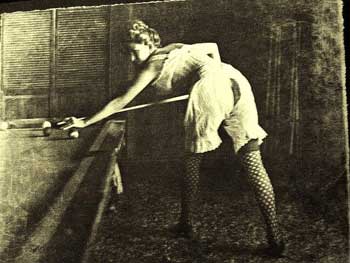Ever wondered how people sought out illicit fun in the pre-Internet days? A map discovered recently has shed light on how people used to find fun in the sprawling red light districts of New York.
As it turns out, some of the neighbourhoods that now command the highest rents and mortgage prices in the country were once home to brothels and other “houses of ill repute”. SoHo, Chelsea, Flatiron and Gramercy were so popular with brothels that it’s reported a single block could easily be home to more than a dozen houses where women offered up their bodies for rent.

The map in question is located in a book called titled “Fast Man’s Directory and Lover’s Guide to the Ladies of Fashion and Houses of Pleasure in New York and Other Cities”, originally published in the 1850s. This book offers a unique look into the culture of the time, as well as what people could expect in a city such as New York.
The “Fast Man’s Guide” – and other books like it – were small and easily transportable. They were, in fact, designed to fit in a man’s breast pocket so that he could keep it with him at all times. In these pre-Yelp days, these books offered reviews and tips on where to go and what to expect from brothels in many areas.
New York’s population exploded in the first half of the 1800s. When the century began the city’s population was roughly 60,000 and, by the 1850s, it had ballooned to 515,000. With so many people pouring into the city, the housing market was in a near constant state of flux. As people moved and migrated toward Manhattan, neighbourhoods in SoHo became rife with larger homes with many bedrooms which were suddenly empty as families moved north in search of more space. Clever businesspeople, including madams with a shrewd eye for business, saw these empty homes and knew they could easily convert them into places for tourists. Some became small hotels and B&Bs, while others offered respite of a different kind.
The SoHo neighbourhood was especially tempting for brothel owners since it was located near so many hotels, theatres and other tourist attractions. This gave brothels in the area a steady stream of customers – many of whom used the “Fast Man’s Guide” as a way to determine which brothels had the best reputation.
 The guide from 1853 lists addresses and reviews for almost 50 different parlour houses and brothels, many of which were located within a few blocks of each other in SoHo. Mercer Street, for example, contained nearly 20 parlour houses. Reviews on different brothels ranged from declaring a home with women who “are very agreeable company” to more specific information. One home, located at 101 Mercer Street earns high marks for its “lady boarders” who were “mostly from the South.”
The guide from 1853 lists addresses and reviews for almost 50 different parlour houses and brothels, many of which were located within a few blocks of each other in SoHo. Mercer Street, for example, contained nearly 20 parlour houses. Reviews on different brothels ranged from declaring a home with women who “are very agreeable company” to more specific information. One home, located at 101 Mercer Street earns high marks for its “lady boarders” who were “mostly from the South.”
In 1859, the “Directory to the Seraglios in New York, Philadelphia, Boston and all the Principal Cities in the Union” was published and it, too, offered reviews and information on brothels in the area. These reviews also show that by 1859, brothels had spread out from SoHo into neighbouring areas.
In addition to directing men to the best brothels in the area, these guides also included warnings on houses best avoided. Mrs. Todd’s brothel on Mercer Street, for example, is held up as an example of a brothel to be avoided at all costs. “The women at this house race the streets to pick up men and decoy them to this den where danger awaits them,” according to the “Fast Man’s Guide” and men were warned to “shun this resort for thieves.”
These guides offer a unique look into the reality of New York more than 150 years ago. Not only does it prove that some things never change, it also proves that even when it comes to 19th Century brothels – reviews make the difference.










